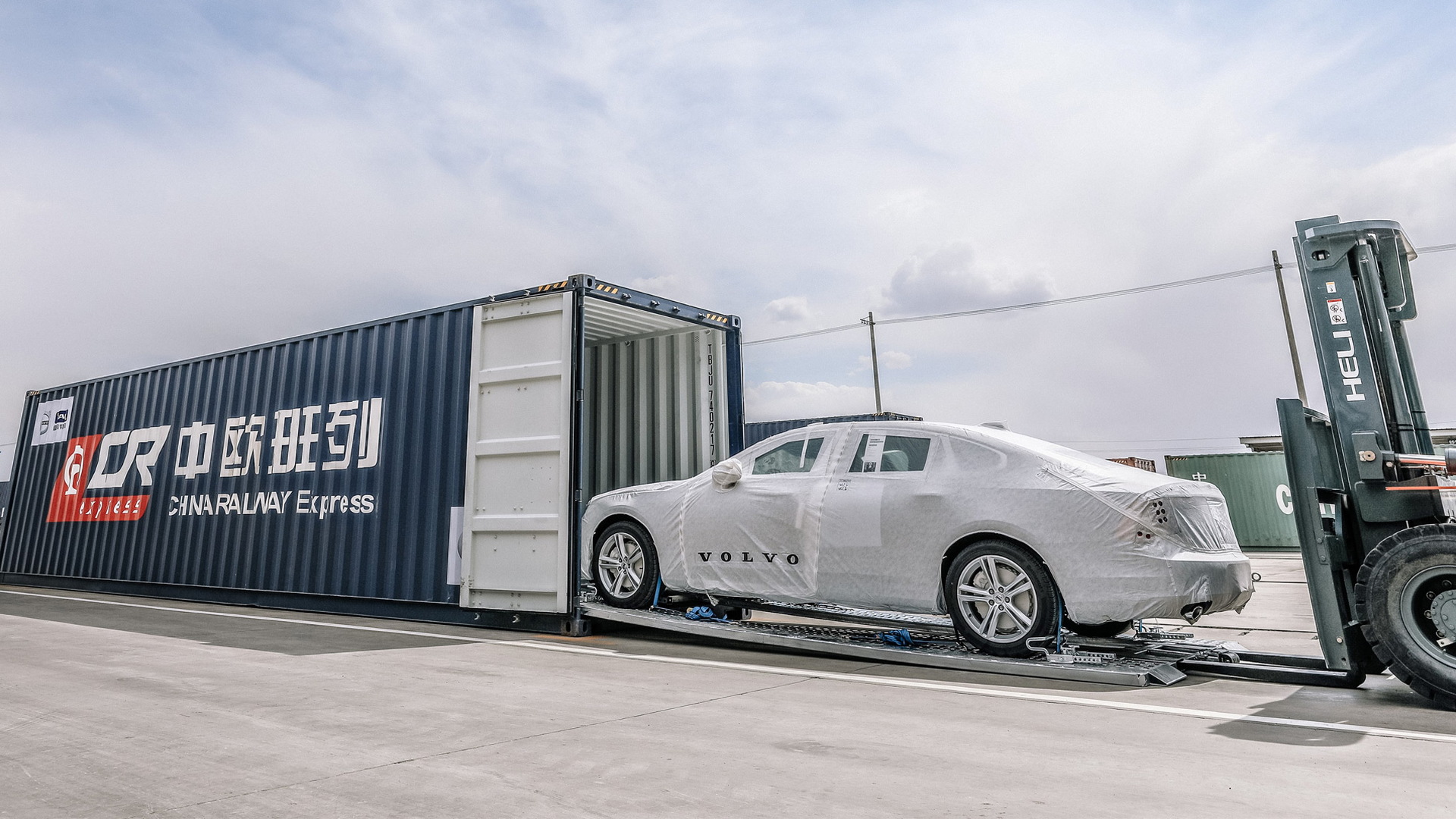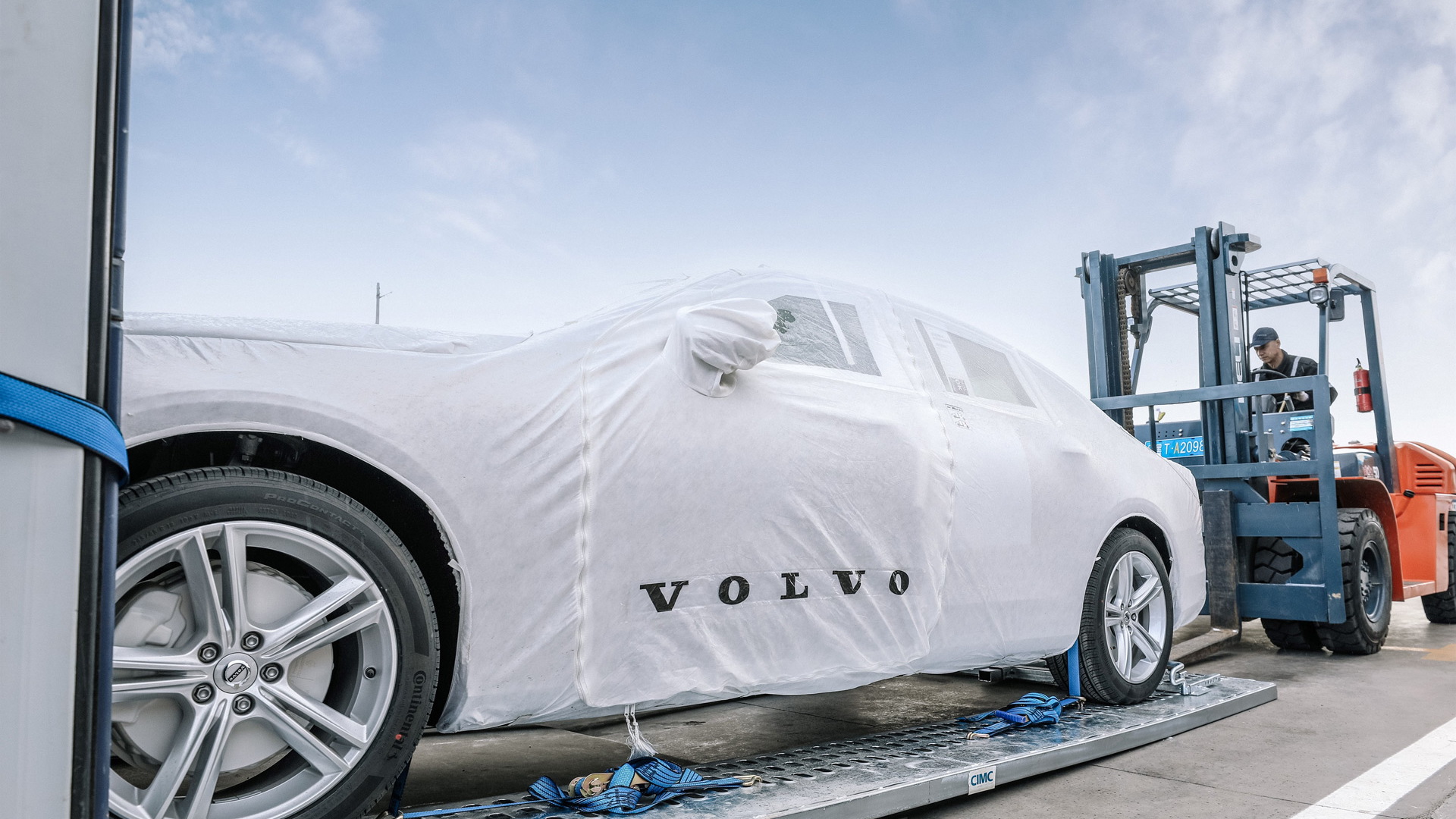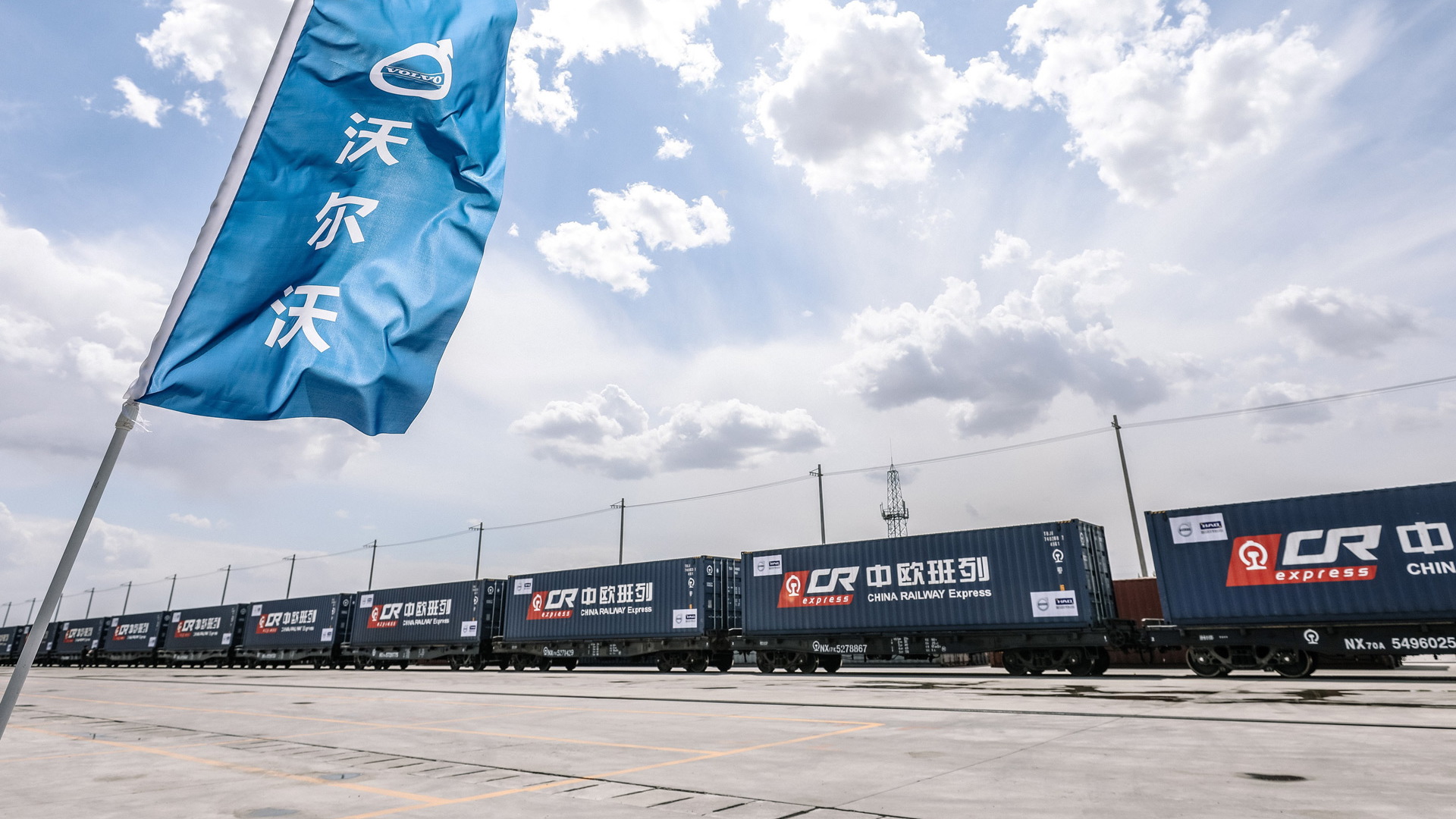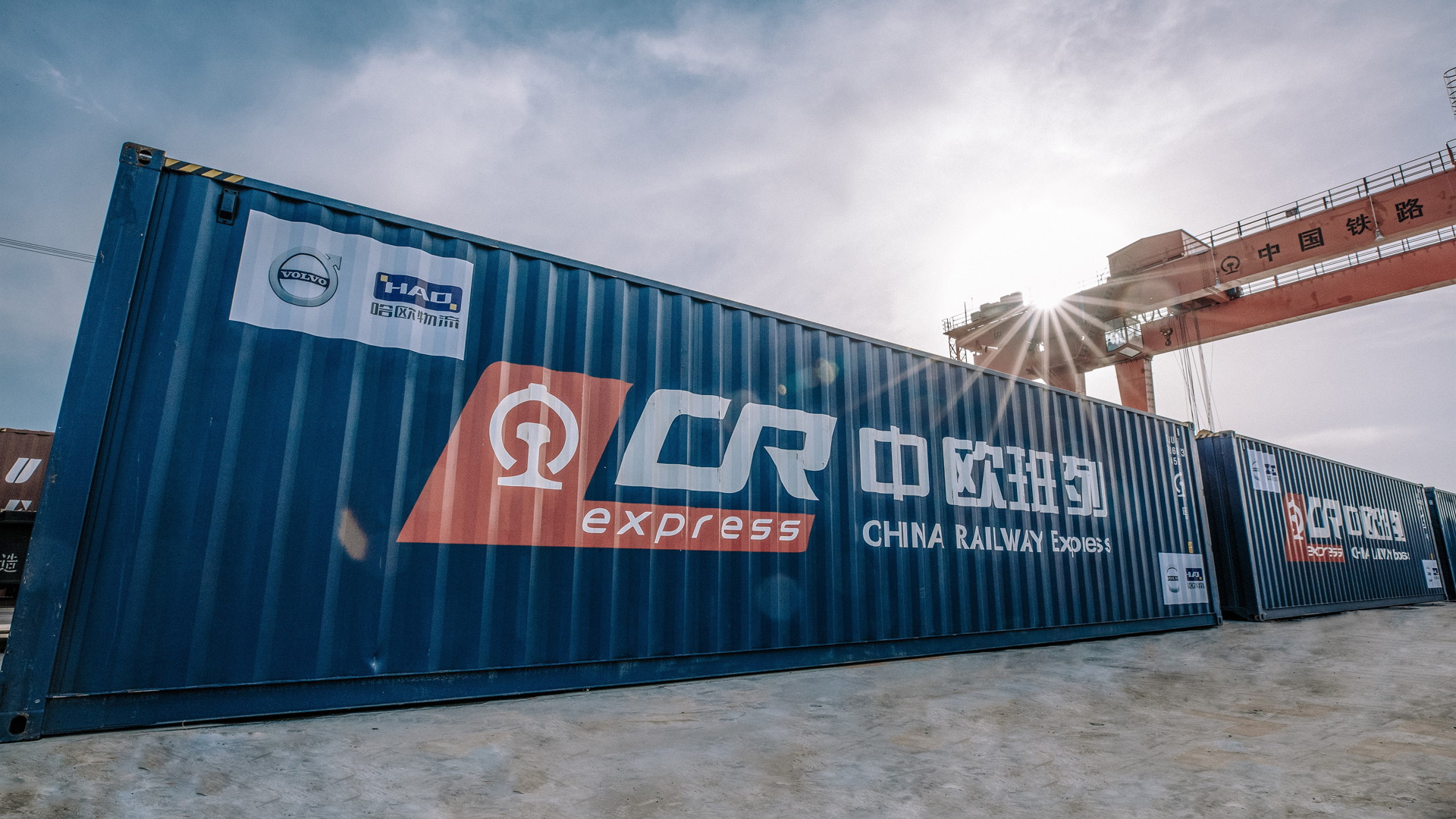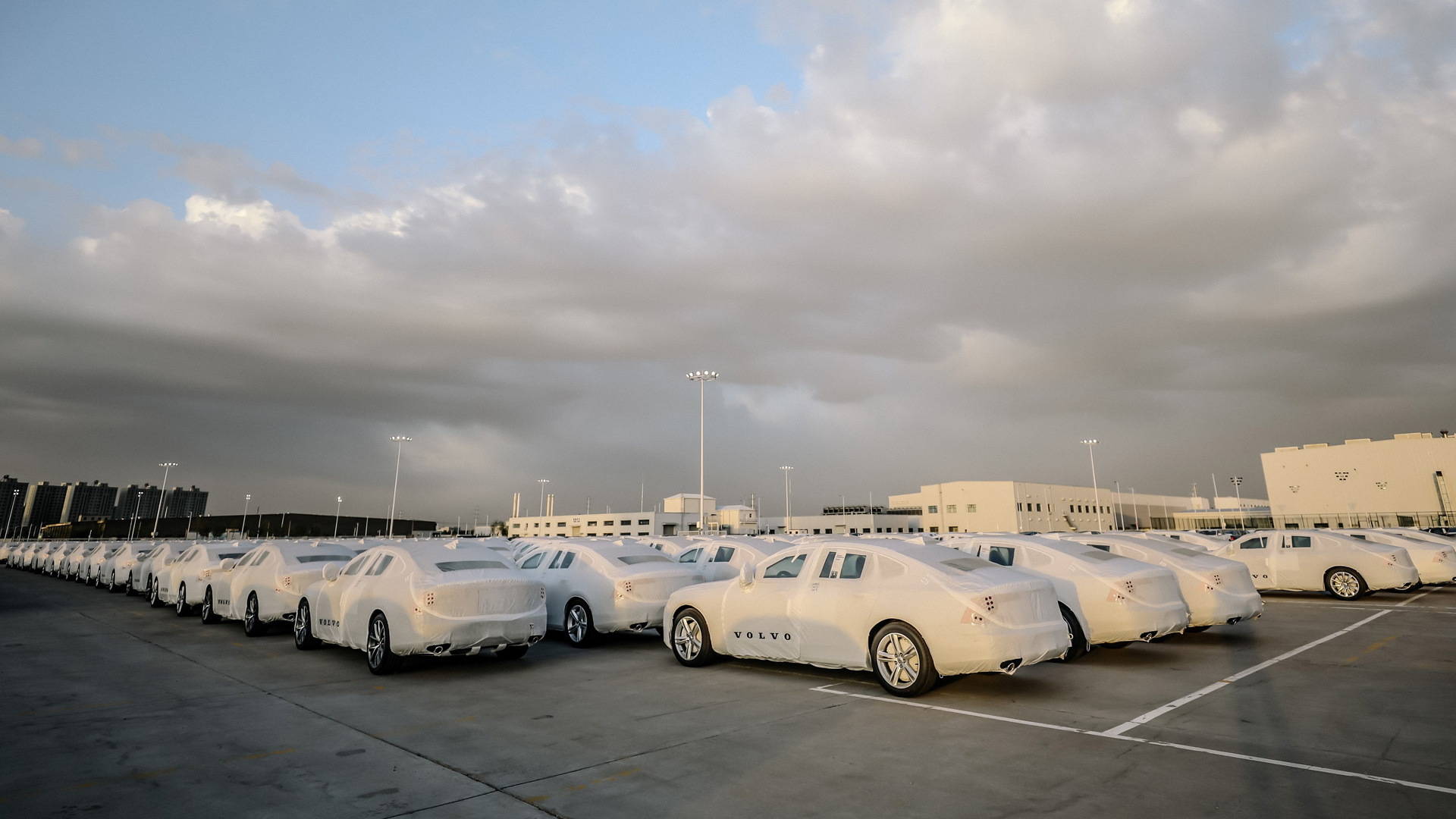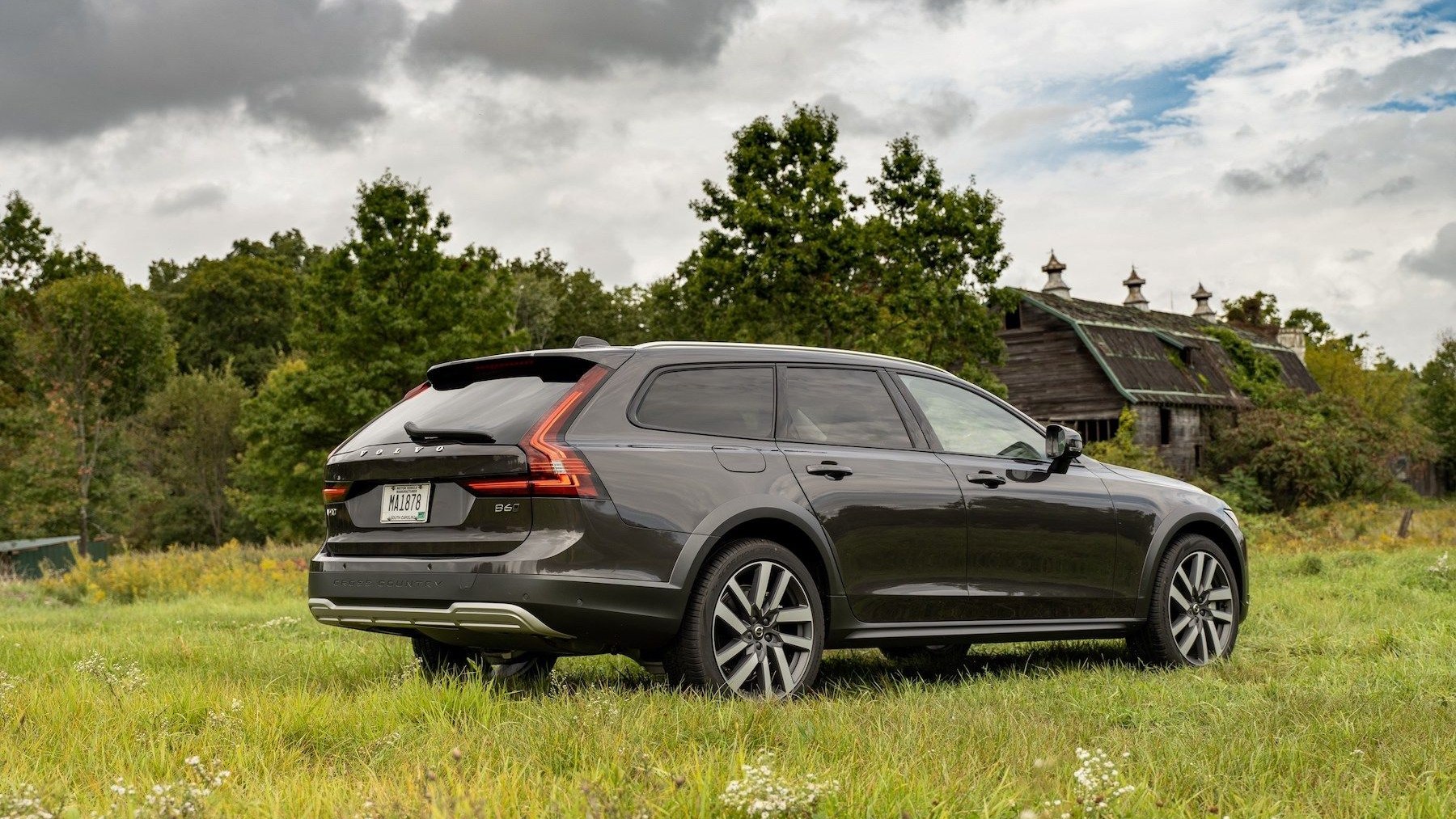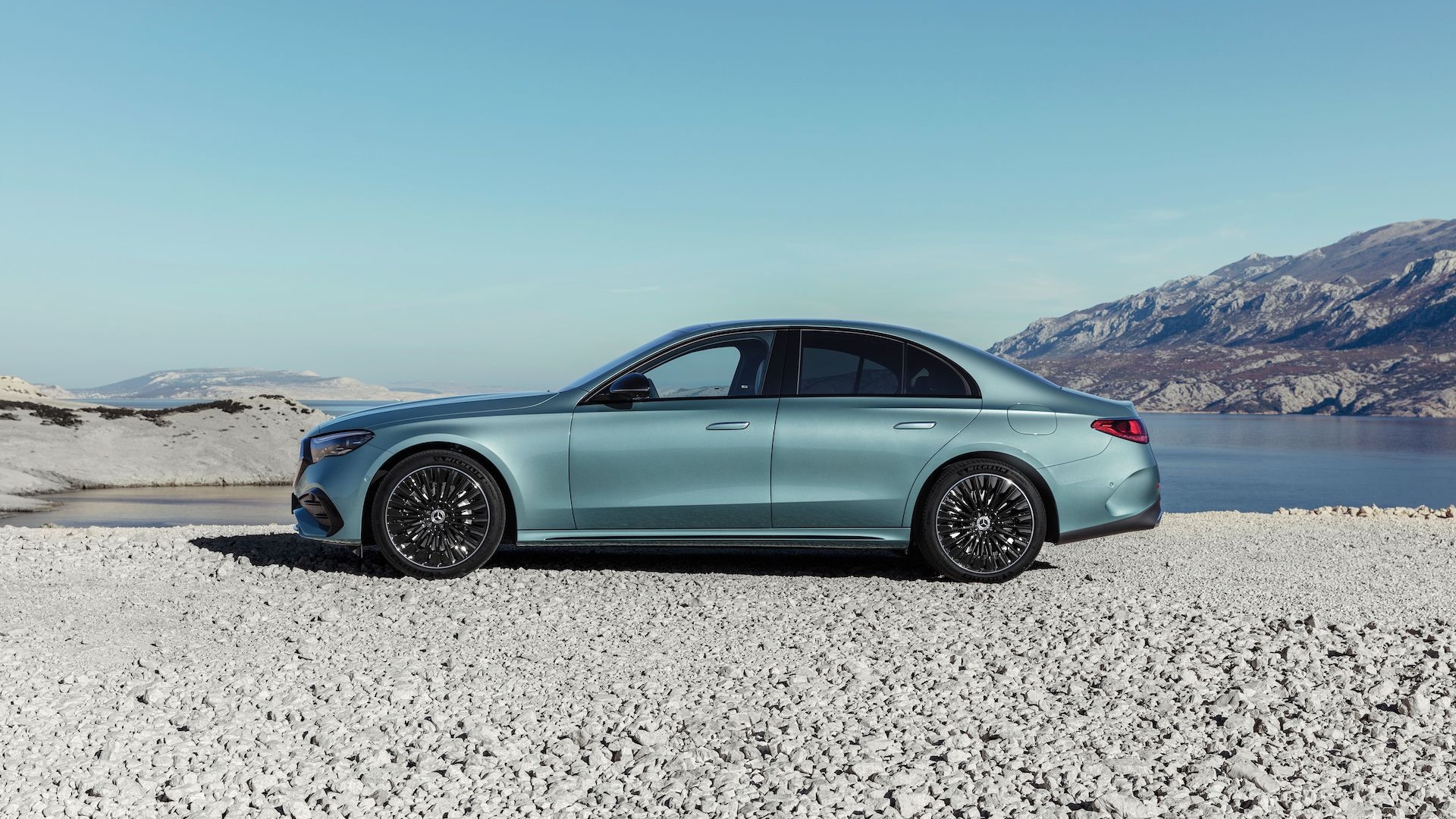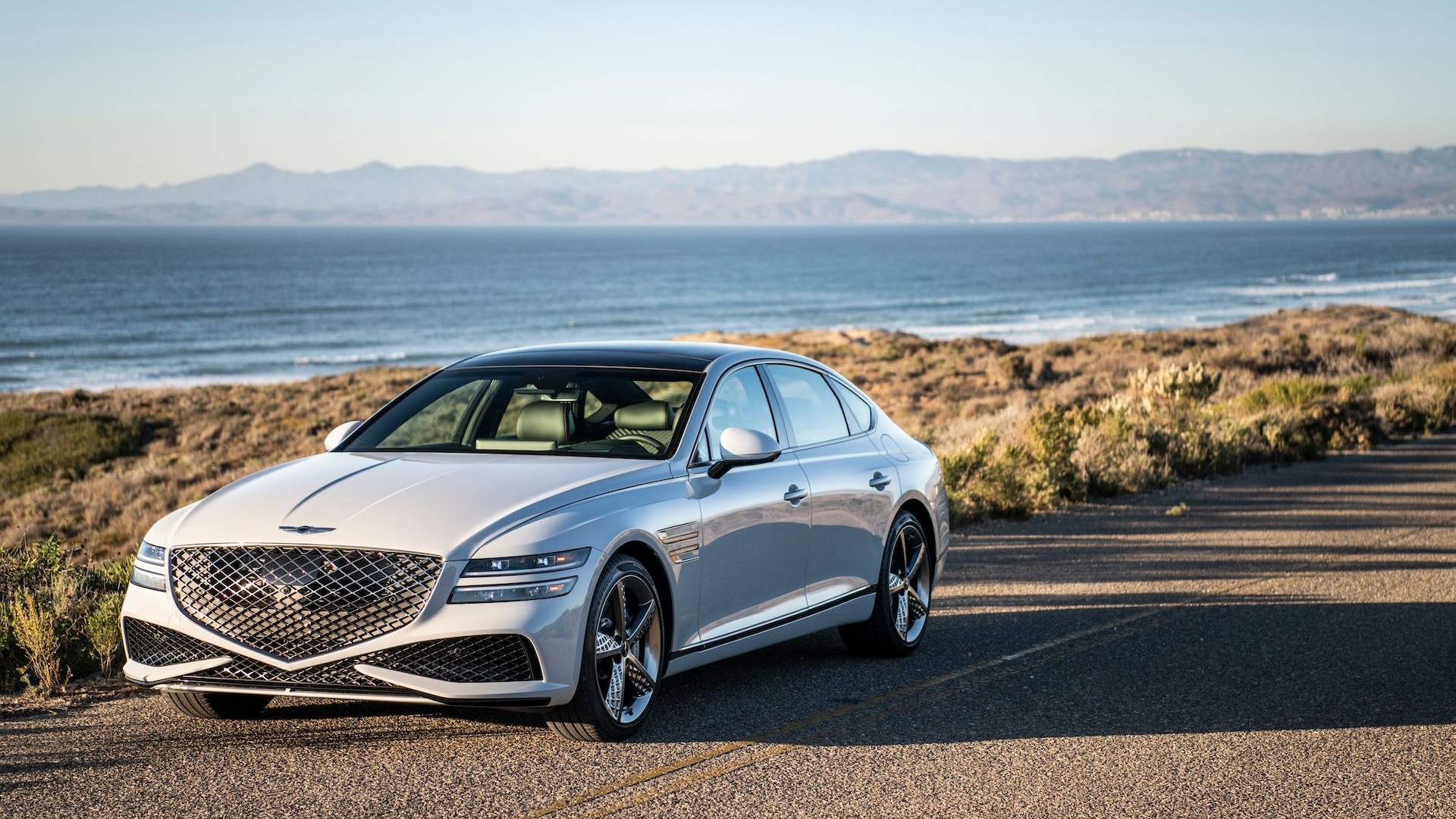Though it doesn’t get much publicity in the west, the China-led ‘One Belt, One Road’ trade initiative will influence the majority of the world’s population by reshaping numerous economies across the European, Asian and African continents and changing the way goods are transported across the planet.
The basic premise is connectivity and cooperation along two major trade routes. One is a land route through the Eurasian land mass to join Asian trading hubs with those of Europe, essentially a modern Silk Road. The other is a maritime route joining Asian trading hubs with those of the Middle East and Africa.
Volvo became the first automaker to use One Belt, One Road when it transported S90 sedans made at its plant in Daqing, China by train to a distribution center in Zeebrugge, Belgium. The sedans arrived on Wednesday and will now be distributed to dealers across Europe.
According to Volvo, this method reduces the time it takes to transport vehicles to Europe by two thirds compared with traditional naval routes, meaning customers receive their car faster after ordering. Volvo says using rail over sea transport also produces fewer emissions.
Eventually, Volvo’s Daqing plant will become the sole hub for S90 production meaning a lot more of the cars will be transported using One Belt, One Road in the near future.
